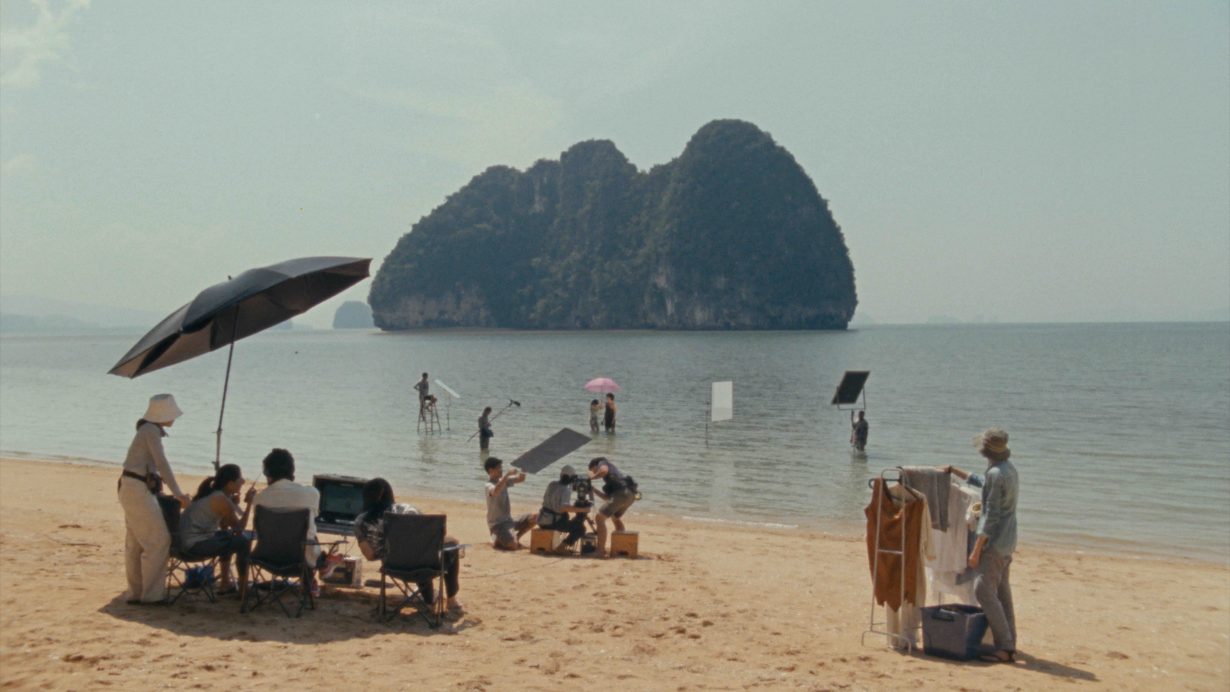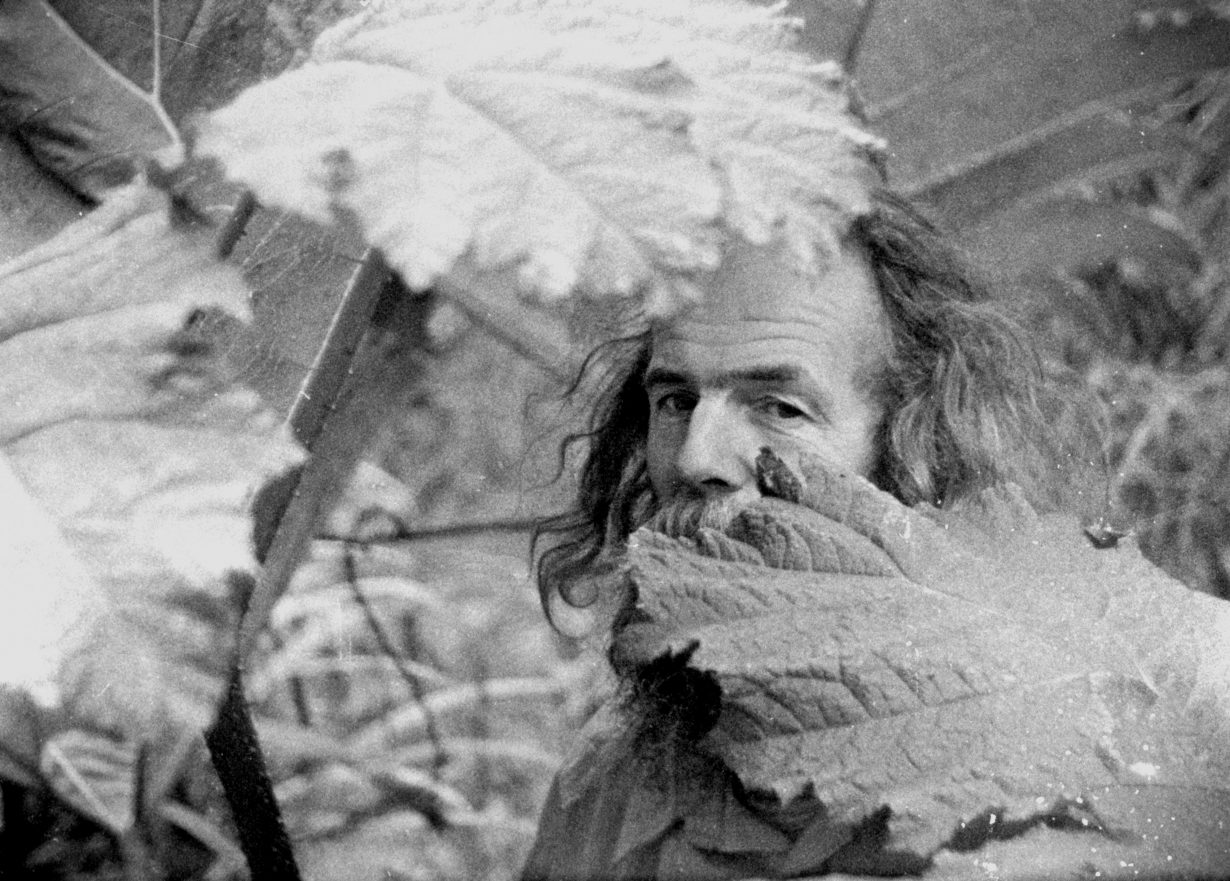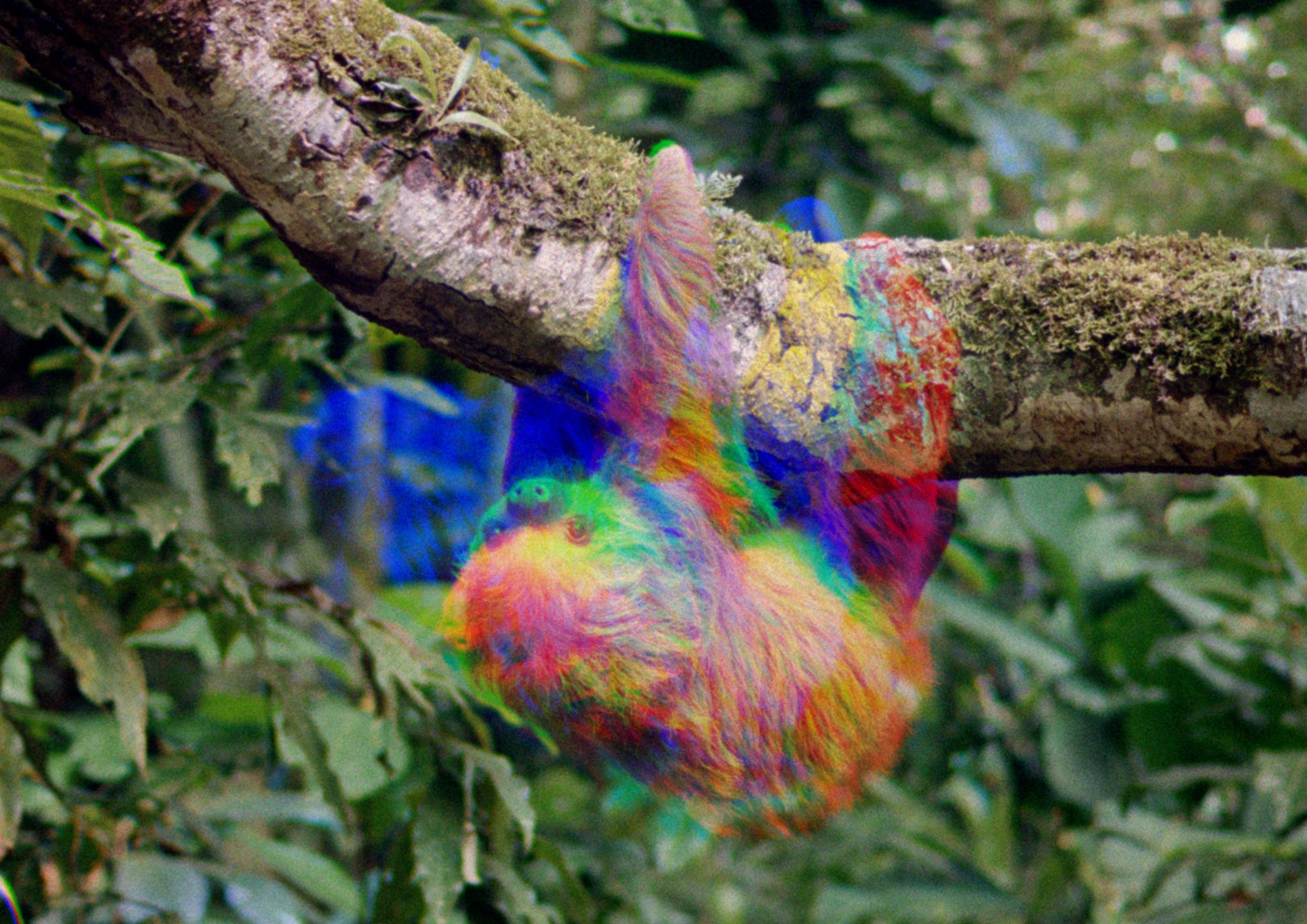A writer reflects on her contribution to an exhibition catalogue, and the meeting of art and literature, in essay and story
Collected Stories, from Ben Rivers, will be published by Fireflies Press this December, during the run of Rivers’s retrospective, Ghost Strata and Other Stories, which opens 14 November at Jeu de Paume, Paris. For the book, Rivers invited 14 writers, including Chloe Aridjis, Kevin Barry, Xiaolu Guo, M John Harrison, Daisy Hildyard, Lynne Tillman and myself, to respond to one or a selection of his films in any way we wished – a celebration and, in the words of the publisher, ‘a testament to the reciprocal nature of inspiration’.
The title of the Jeu de Paume retrospective draws on Rivers’s long-standing relationship with literary forms, which both inspire and appear within his work: in Rivers’s film Trees Down Here (2018), we hear John Ashbery read his poem ‘Some Trees’over a blurred background of drawings and the sound of pages turning; in Ijen/London (2022), Herbert Read’s poem ‘The Autumn of the World’ is spoken mournfully over a cloudy, dusty, vermillion landscape; and Paul Bowles’s short story ‘A Distant Episode’ provides inspiration for the feature length The Sky Trembles and the Earth is Afraid and the Two Eyes are not Brothers (2015). Rivers has made clear that his movement from text to film is not representational, not an adaptation or imagining of the literary worlds he inhabits, but rather is formed out of some essence, a ‘feeling’, drawn from literature and made anew in film.
I took a similar path in the opposite direction in writing ‘2006’, which is reprinted below. The title is inspired by Rivers’s film, The Coming Race (2006), in which we watch people climb a rocky mountain, accompanied by an ambiguous noise that could be rocks rolling over one another, or the sound of water boiling. Responding to an artwork engages me in a process I compare to the work of a translator. The task is neither to make a word-for-word swap, to translate the story of the film into text directly, nor is it to intellectualise it, but to take inspiration from it and make it anew in another form – not a copy but a translation; not an imprint but a relation.
This process of ‘relation’ requires receptivity on my part, an open, non-judgemental stance towards the work. I approached Rivers’s films, as much as possible, without employing the effort of my mind. The intellect works by judging and explaining, which would squash the meaning his films hold in their quiet corners. ‘Meaning’ is a concept impossible to quantify. Which is why the term ‘translation’ feels most appropriate, because a good translator engages with an artwork as it is, and therefore seeks to preserve its mystery.

The film and text do have their points of comparison. The line in a poem, or a sentence, can be long or short, the movement fast or slow, like the cut between scenes; the languages of both art forms are employed to guide the reader – or viewer’s – attention towards what the artist deems relevant; and both the filmmaker and the writer understand that much of the work is about creating, moving or managing time. When I’m teaching writing, I often say that we have few words but all the time in the world. Just as a painter can create the illusion of depth, the filmmaker or writer creates the illusion of time passing within their work. In reality, a frame, a word, in itself has no past or future.
The almost metronomic soundtrack of Trees Down Here seems to count the time, like the time we are all counting: the days, the hours, the seconds, the pages turning. My waking life is a continual present mediated by clock time; the time I actually experience is malleable. Rivers’s work reminds us that the aforementioned units of time can be done away with: what is important is time as it is experienced, the time of the imagination. The building featured, 6a Architects’ Cowan Court of Churchill College, Cambridge, is surrounded by trees that pre-existed it and might well outlive it, that seem to narrate the film silently and allow us to access their time – the time that spans centuries, stretches long into the past and future, that we can only access through the mind. It may have been this that led me to use the refrain, ‘still no sound of the hour striking’. Time arises as part of the process of storytelling and therefore is a mystery apparent to both the filmmaker and writer. This comes with a recognition of our collective illusion: we live in a continual present but the past and future arise out of the story of our lives. Perhaps it is this that helps Rivers’s films and literature relate to each other so well.
Treading the line between what is real and imagined defines much of Rivers’s oeuvre. He avoids ‘literalness’ in his work. His subjects are both real and created, they exist, and then in the process of making the film they become something new. They are people and landscapes that refuse to be explained; no causal links between one movement and another are given. His treatment of them leaves space for the imagination. When writing, it is impossible to be completely silent, to ‘say nothing’. There is usually a subject spoken for, a ‘we’ or ‘you’ or ‘I’. In addition, language carries its history with it. As a writer I both try to accept the limitations of words and transcend them.

In films we can believe that what we are seeing, we are seeing with our own eyes. Rivers deliberately subverts that notion. He reminds us that he is there. His voice is sometimes audible, giving direction in There is a Happy Land Further Awaay. He is the subject driving the narrative in parts of Ghost Strata. The subject looks at the camera and laughs in The Creation As We Saw It. Unlike with the written word, his films can’t address the viewer directly with a question without flattening the effect of the film. But with his presence, he questions our assumptions about what we are viewing. He supplies us with meaning via the language of colour, form and poetry, but gives no easy answers. In ‘2006’ I remind the reader that he is there, ‘in the eye of his own creation’, to remind us, as he has done, of this double view. That of the observer and the observed.
I borrow his language of colour and form, ‘redness spread around as cloud, the air blue forgotten’, to breathe new life into words. However, just as when we move from one language to another, there are phrases and sayings that are impossible to translate. Moving from film to text reveals the limitations of each, and challenges me to test, in the words of Kate Briggs, author of This Little Art (2017), ‘how much and how little meaning words in sequence can hold’. It is a question of ‘meaning’, the ineffable thing carried between the two works, which is expressed despite the fact that my voice as a writer is visible in the configuration of the words in ‘2006’. Unlike in Rivers’s films, the images in my text will be conjured up by the reader only. I believe that allowing meaning to be translated is a question of leaving enough quiet, empty space, both within myself and within the text. A quiet which later only a reader can fill. Wallace Stevens echoes this beautifully in the poem ‘The House Was Quiet’, used in Rivers’s 2022 film of the same name: ‘The quiet was part of the meaning, part of the mind.’

2006
Stargazing and a string of faces: ashen, worried, wondering, shying, colluding. A string of faces and still no sound mouthing the hour, no sound of the hour striking.
Still no hope of yesterday returning and yet, and again yet. Around I will walk through the vermillioned dryness around again, and yet to cross the horizon again. Our feet turn the Earth and we move, again the crack of rock splitting, the broken path, the smoke from the fire, the pilgrimage up towards this year, next year, again.
The quietness of the rock has bottomed me out, made me deep and hungry as a well so the depth reaching along those bottomless openings in the ground spew up, dust and steam, redness spread around as cloud, the air blue forgotten, and we breathe in, we walk past.
Still no sign of the hour turning.
All this loneliness and no one to share it with. We are each the crown of the pine tree, or the palm, each and one to ourselves. We are each that twist of rock molten and reformed. Each come to our own mountain and slip a lonely path under force of the starling’s stink and buoyant song, under fear of the dark wet caves and the downpour the shriek of bats woken from their sleep O we envy their fearless sleep. This is only the beginning of the race.
The calm before the running. When we will heave a body of noise over the ridge disturbing the gentle airways through which the mountain breathes, and has us holds our weight. For all the stargazing we cannot see them, the precious animals that should point our way at night – the pig, the dog or water rat – just a string of faces in the sky, worried, rushed, forgetting, colluding, determined, shying on their last ebb of faith and so on. And so on and on, with a grimace and mouth open, dressing ourselves in shadow, hooded eyes, concealed and blurred expressions and so on and on.
This is what it is.
And take a breath of dust and say this is this is my slice of happiness, and say, there was never anything so lovely as this and say – we dare not say more.
We dare not say another word. We take each other’s hands and we are naked. And feel each other only through the skin and sweat which amplifies the sense of ease flooding us at the sight of the sea. Finally we have our bearings and finally, we can and for once stop, a moment, and pick at the clusters of pink tubers, the crunch of the seabed underfoot, and eat up the sounds of this life crashing into the next Never mind the one who sits alone because that’s him.
That’s him, isn’t it? In the eye of his own creation. With gaze sloping towards the ground then drinking up the sea that’s him, we know. With the moon for a little while. Who both looks and sees through the one eye, and we eye him .Glancing off our skin is the hardest light. A tree on a white beach. He is. A coconut shell in the rock and on, so on.
And finally we climb and we run. So he has coloured everything in a melancholy tone, in a trembling, shimmering, artificial light which draws lines around our pores and gives shape to our senses, to the hairs on our arms and growing from our heads. Light that reveals the sometimes harshness of our year, but then still its slow hazes and pulsing seas who lose their thoughts to our minds. Who whisper through the grey rains drunk up in restless gratitude.
We hope that the mountain will hold us.
That it will not shed us in a landslide, a sigh and roll of rock, and keep us waiting under the stones marking the time on our fingernails and peering through the gaps up at the red sky, the wounded moon, unable to take the beauty of it. Unable to take the memories O the heavenly dips and flows of stone. The little bird wings. The sharp of their beaks dipping to the water to drink. Can’t take the menace of the sun’s shadows our whole journey is in shadow, still no sign of them turning the hour and yet, and ever yet, the first light is our returning faith, which overnight was buried, but never lost.
Vanessa Onwuemezi is author of the short story collection Dark Neighbourhood, published by Fitzcarraldo Editions in 2021.
